Note
So these are very different paintings, but I was wondering if you had anything for Albert Aublet's Selene, or R. B. Kitaj's The Wedding. Love the blog, btw

This one made me think of Fatoumata Kébé, unfortunately her books don’t (yet?) exist in English :( She's a French astrophysicist who has a PhD from the Institute of Celestial Mechanics in Paris, she's written two books so far and both are love letters to the moon—literally for one of them, it's called Lettres à la lune. The other one, La lune est un roman, is more scientific (but very readable) while Lettres is about the moon in literature and poetry. They were both published recently, hopefully they'll get an English translation at some point!
I’m also reminded of Mary Ruefle’s essay Poetry and the Moon, from her collection Madness, Rack and Honey—I recommend the whole book :)
It has been noted many times that there are more sad poems than happy poems in this world, and [...] I would guess that the moon occurs more frequently than the sun as an image in lyric poetry. And I wonder, why? I could start with a dozen reasons: insomnia; [...] or the fact most of the poems in this world have supposedly been written by heterosexual men, who desire women, and the moon is embodied, in so many languages, as a woman.
[Moreover] there is a greater contrast between the moon and the night sky than there is between the sun and the daytime sky. And this contrast is more conducive to sorrow, which always separates or isolates itself, than it is to happiness, which always joins or blends. And to stand face-to-face with the sun is preposterous—it would blind you. The moon has no light of its own; our apprehension of it is but a reflection of the sun. And some believe artists reflect the creative powers of some original impulse too great to name.
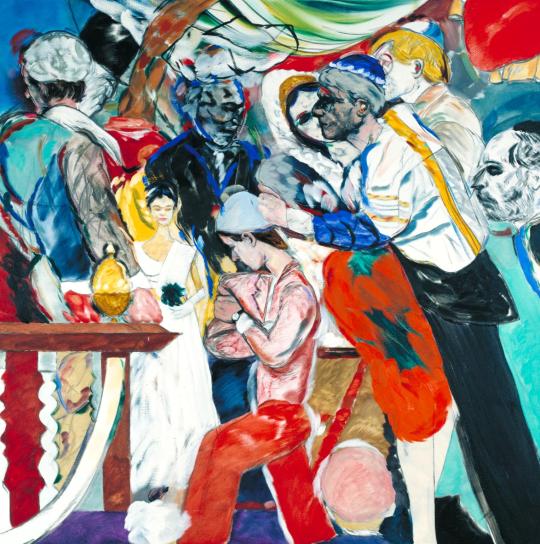
At first I thought this one should be some sort of family saga, with lots of characters and events spanning decades, something like Charles Lewinsky’s Melnitz—but then the messiness of it and the wedding theme made me think of Isaac Singer’s Enemies: A Love Story. Singer’s short stories also feel quite like this. I prefer Melnitz and would recommend it more heartily but that’s because I really enjoy big hefty books, that let you spend a lot of time within the same story and in the company of the same characters.
#ask#book recs#albert aublet#r.b. kitaj#fatoumata kébé#mary ruefle#charles lewinsky#isaac singer#nonfiction#fiction#i couldn't think of a fiction book that feels like the first painting but i'd love to find one...
58 notes
·
View notes
Note
Can you suggest something like Date Rossetti's The Day Dream?

This says classic lit and cynical anti-heroine to me! Maybe Undine Spragg from Edith Wharton’s The Custom of the Country, or Henrik Ibsen’s Hedda Gabler...

Or Elizabeth Barrett Browning’s Aurora Leigh, if you’d prefer a more likeable character. I don’t know if epic poetry is your thing but the vibe of it is very like this painting, I think. Aurora is politely fed up; at one point a rejected suitor tells her “Is it my fault that you’re a grand wild creature of the woods?” When her aunt is unahppy with her for turning him down when he ‘asked her to be his wife’ Aurora goes:

Another great passage is this one about men’s reactions to women writers:
You never can be satisfied with praise
Which men give women when they judge a book
Not as mere work, but as mere woman’s work.
Expressing the comparative respect
Which means the absolute scorn. ‘Oh, excellent!
What delicate discernment… almost thought! [...]
Among our female authors we make room
For this fair writer, and congratulate
The country that produces in these times
Such women, competent to… spell.’
At another point Aurora sighs “For me, I’ve done / what women may—we’re somewhat limited.” To return to Hedda Gabler, a Goodreads reviewer described her as a woman who ‘suffers the tragic consequences of getting exactly what she wanted out of life.’ But within the limited scope of what women can want... Similarly there’s a line in The Custom of the Country that goes ‘[Undine Spragg] had everything she wanted, but she still felt, at times, that there were other things she might want if she knew about them.’ I think that’s how I interpret the expression of the woman in the painting, and why I thought of these three characters in particular :)
#ask#book rec#dante gabriel rossetti#edith wharton#henrik ibsen#elizabeth barrett browning#classics#fiction
39 notes
·
View notes
Photo

This artwork by Cynthia Decker
feels similar to: The Travelling Cat Chronicles by Hiro Arikawa
#book recs#the travelling cat chronicles#hiro arikawa#cynthia decker#fiction#animals#it's quiet and a bit melancholy! and there's a chapter in which the cat discovers mount fuji...
127 notes
·
View notes
Note
Hey do you have anything that reminds you of Nichols Canyon by David Hockney?
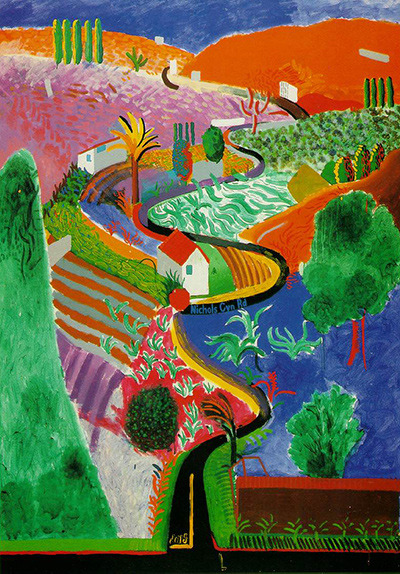
Hi! It doesn’t really fit this artwork geographically-speaking (it’s about a small community of farmers in a hamlet in Provence) but my first thought was Jean Giono’s Que ma joie demeure—in English, Joy of Man’s Desiring. A goodreads reviewer said this novel paints “elemental rural landscapes” and that’s how I remember it—very rural and colourful and rather strange at times, with the ominous calm of utopian tales—an earthly philosophy of joy and nature and work (useful vs useless work) and how humans use or misuse these gifts.
He gave a sweep of the scythe just above the ground.
“You son of a bitch!” said Honoré. “To get an extra centimetre of straw, you’re going to break my scythe on the stones.”
But Randoulet displayed his skill.
If you have ever seen a swallow, in a swift plunge, brush his breast over the water, and fly up and swoop and rise, without ever wetting the tip of a wing...
“That is how he mows,” said Honoré. “Come and see.”
They approached. It was really something beautiful. It seemed as if Randoulet sensed [the stones] in advance. He swung the scythe, held it back, made it pass flat over the stones, raised it, swung it once more. Each cutting required new gestures. Each time the necessary gestures came exact and perfectly timed. It was a joy to watch. Everybody watched.
Jacquou picked up a stalk of wheat. It was cut level with the ground. It was whole, as if untouched, mowed as if by a divine mower. It was too beautiful. A work not done anymore.
“It takes time to do that,” he said to himself. “One must have time to waste, to mow like that.”
[He held] the stalk of wheat in his fingers like a candle.
“Or one must be very poor, need everything. Or one must be very rich and do it for pleasure, for joy, for the sake of doing it well. And so in those things, rich and poor, it is all one, and poverty is wealth.”
Randoulet reached the end of the field.
“There,” he said.
He had mowed a row.
And if you’re rather looking for a light, funny summer read, try Laura Cunningham’s memoir A Place in the Country! It is dedicated “to all the city people who crave the country, who love nature with a passion that is near demented in its innocence...”
42 notes
·
View notes
Note
My favorite artwork is a piece by an unidentified artist in the met collection titled “Tartar Officer with Blonde Lady Playing Musical Instruments”
is there any book you can recommend that has that same feeling of tenderness and warmth?

This reminds me of Six Records of a Floating Life, by Shen Fu. He’s a writer from the late 1700s, and the first two records especially feel like this, when he talks about his happy marriage. It's a short read (unfortunately part of the text has been lost) and I remember these first two parts as quiet and lovely.
When I was thirteen, my mother took me along on a visit to her relatives. That was the first time I met my cousin Yün, and we two children got on well together. I had a chance to see her poems that day, and though I sighed at her brilliance I privately feared she was too sensitive to be completely happy in life. Still, I could not forget her, and I remember saying to my mother, “If you are going to choose a wife for me, I will marry no other than Yün.”
Mother also loved her gentleness, so she was quick to arrange our engagement, sealing the match by giving Yün a gold ring from her own finger. This was in the thirty-ninth year of the reign of the Emperor Chien Lung [...].
We lived just west of the Pavilion of the Waves' Lotus Lovers Hall, where it was cooler. Almost under the eaves of the hall there was an old tree that cast a shadow across the windows so deep that it turned one's face green. [...] Because it was so hot, Yün had given up her embroidery. She spent all day with me as I studied, and we talked of ancient times, analysed the moon, and discussed the flowers. [...] We were certain two people had never been happier than we were.
I am also reminded of some chapters from the manga Otoyomegatari by Kaoru Mori, which takes place in the steppes of Central Asia in the 19th century—the artwork is gorgeous, and the general mood is definitely one of tenderness and warmth.
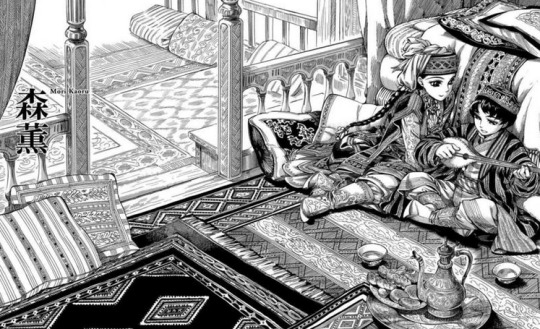
72 notes
·
View notes
Photo

This artwork: The Chase by FrankAtt
feels similar to: The Abyss Surrounds Us by Emily Skrutskie
#book rec#emily skrutskie#the abyss surrounds us#fiction#fantasy#lesbian fiction#this was a fun read
293 notes
·
View notes
Note
I love this blog so much. Do you have anything to go with Georgia O'Keeffe's Deer's Skull with Pedernal or March Avery's Condors?
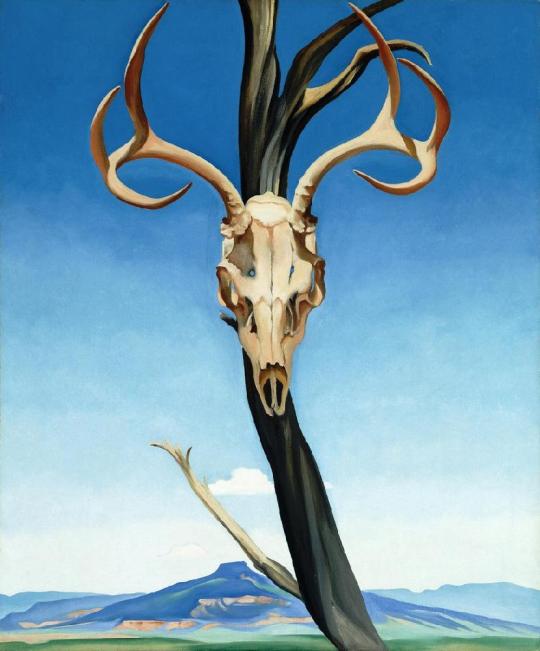

Thank you <3 And I love these! My first thought was Willa Cather’s Death Comes for the Archbishop. I liked its calm, pensive atmosphere, and the vivid descriptions, particularly in all the passages about Father Latour travelling across his immense, sandy diocese on his mule. Someone on goodreads commented that this book made them feel “like I have just returned from a New Mexico all gold and orange and green and baking in stark sunlight as I ride my mule towards shelter behind cool cloister walls”.
In a very different spirit: Luis Alberto Urrea’s The Devil’s Highway. This one is pretty horrifying. Don’t read it during a heat wave...
Nothing soft here.
This world of spikes and crags was as alien to them as if they’d suddenly awakened on Mars. They had seen cowboys cut open cacti to find water in the movies, but they didn’t know what cactus among the many before them might hold some hope. [...] Thousands of travelers went into the desert, and piles of human bones revealed where many of them fell. One writer [...] tells of a pair of old bullet casings found out there. They were jammed together, and when pried apart, an aged piece of paper curled out. On the paper, someone had written “Was it worth it?” [...]
In many ancient religious texts, fallen angels were bound and buried beneath a desert known only as Desolation. This could be the place.
I haven’t read it yet, but Ki Longfellow’s Walks Away Woman is on my to-read list and it might fit as well, it’s about a housewife from Arizona who walks out into the Sonoran desert to die—I was tempted by a goodreads review that says: “You can find any number of books about men matching their wits against nature. [...] I can't think of any book where a woman matches her wits against nature. And certainly not a normal American soap opera watching, pill popping, aging housewife kind of woman. It's a simple tale and it isn't. To outline it is to spoil the absolute delight in following this woman [...] as she tries to die, and then, of course, tries not to die.”
#ask#book rec#georgia o'keeffe#march avery#willa cather#luis alberto urrea#ki longfellow#fiction#nonfiction#note that the second book is from 2004 so all the details about the us-mexico border policies; border control etc are pretty outdated
92 notes
·
View notes
Photo

This artwork: My Fantasy Place by Panji Andrian
feels similar to: Piranesi by Susanna Clarke
I discovered that fish were plentiful in the Drowned Halls. Their waters were still and I was not so afraid. The difficulty here was that the Drowned Halls were surrounded by dereliction on all sides. [...] The staircases [...] are mostly built on the same noble scale as the rest of the House and each step is almost twice the height that is comfortable for me. (It is as though God had originally built the House intending to people it with giants before inexplicably changing His Mind.)
996 notes
·
View notes
Note
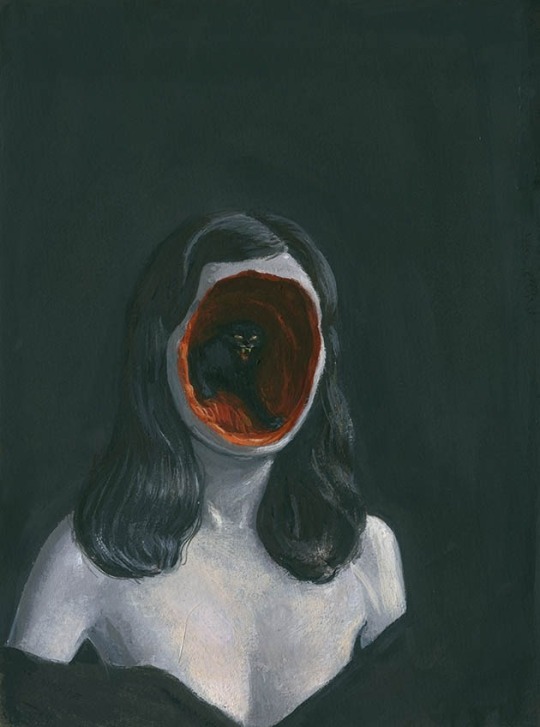
Hi, are you still doing this? If so, so you have any recs for this or any other Aleksandra Waliszewska painting? I just want to feel like I'm going insane and don't have a face anymore.
I am still doing this! And I like how specific your request is. Maybe a surrealist writer? My first thought when I saw your image was one particular short story by Leonora Carrington in which a girl sends a hyena from the zoo to attend her débutante ball in her stead.
The greatest difficulty was to find a way of disguising the hyena's face. At last [the hyena] said, "I think I've found the answer. Have you got a maid?"
"Yes," I said, puzzled.
"There you are then. Ring for your maid, and when she comes in I'll pounce upon her and tear off her face. I'll wear her face tonight instead of mine."
Her other stories are weirder. I’ve mainly read her in Spanish so I’m not sure which stories are grouped in which collection in English—House of Fear seems to include the hyena one (and Down Below at the end is also worth a read—Carrington’s first-person account of a bout of insanity she suffered during the war.)
Something about this painting also reminds me of the writing of Anna Kavan. Maybe Asylum Piece or Sleep Has His House—her writing is dreamlike (or nightmarish) and mad and has this ‘hole-in-the-head’ quality to me, because of how much the outside world influences the narrator’s state of mind and/or the other way around—in Asylum at one point, the mechanical sound of a clock makes her feel like her mind is a machine, all cogs and wheels and engine noises, and then she glances out the window and the whole world starts to mirror her mindset:
[...] I hear how sweetly the small birds are singing. But even as I stand there all these happy things start to recede, to become phantasmal, transparent as the texture of dream plasma, banished by the monstrous mechanical outlines of pulleys, wheels, shafts [...]. Like a fading mirage in the background I can still, straining my eyes, faintly discern the sunlit grass, the blue, blue arches of sky [even as] the wheels revolve faster, the pistons slide smoothly in their cylinders, the noise of machinery fills the whole world.
A small, oppressive room makes her feel literally unable to move; a hopeless moment is accompanied by fog outside, and a disagreeable day by “swarms of mosquitoes”—it ends up feeling disorienting in its relentlessness, this absence of boundary between the outside world and the narrator’s inner world; every mood permeating in both directions.
#ask#book rec#leonora carrington#anna kavan#aleksandra waliszewska#fiction#short stories#honourary mention: i briefly considered 'the face of another' by kobo abe#but rejected it as the narrative is definitely rational / philosophical rather than insane#and if anything will make you feel uncomfortably aware of your own face
376 notes
·
View notes
Photo

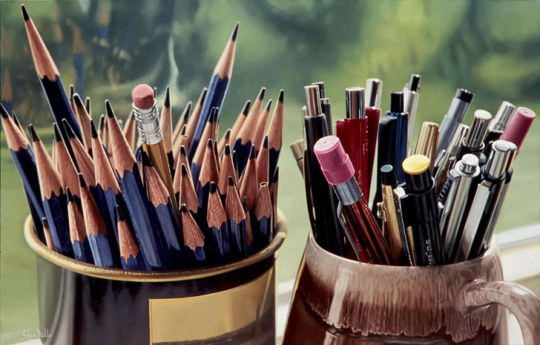


These paintings by Steve Mills
feel similar to: Nicholson Baker’s The Mezzanine
#book rec#steve mills#nicholson baker#the mezzanine#fiction#i read this one last week and it was slightly... exasperating but i really liked it#i couldn't think of any artwork at first and then i thought oh right. devoting so much insane attention and time to ordinary things?#it's photorealism applied to literature...
93 notes
·
View notes
Note
Jan Matejko's Stańczyk is certainly a mood. But is it a book?

I am more familiar with French jesters than with Stańczyk, so this painting made me think of Chicot and Triboulet—the former is featured in Alexandre Dumas’s La Dame de Montsoreau (which, I’m just realising, has been translated in English as Chicot the Jester, making him the title character); while Le bouffon des rois by Francis Perrin is about the life of court jester Triboulet, who recently acquired tumblr fame with this post. But I didn’t like either book all that much! (The Chicot novel is a sequel (of sorts) to Queen Margot which I liked a lot better.)
I racked my brains for a book that I enjoyed and that features a despondent jester and oh, of course—I must mention Robin Hobb’s Farseer series. The character of the Fool is much more prominently featured in later books but I would recommend starting with the first one, Assassin’s Apprentice.
#ask#book rec#jan matejko#francis perrin#alexandre dumas#robin hobb#fiction#historical fiction#fantasy
23 notes
·
View notes
Photo

This artwork by Alexandra Dvornikova (x)
feels similar to: The Bear and the Nightingale by Katherine Arden
#book rec#alexandra dvornikova#allyouneediswall#the bear and the nightingale#katherine arden#fiction#fairy tale#folklore
307 notes
·
View notes
Note
Anything for the painting "And we are not afraid" by Nicholas Roerich?

My first thought was the Kalevala, the Finnish national epic! Tales of folklore would fit the colours of the painting, the otherworldly, magical feeling—and these long-bearded, cloaked, wizard-like figures facing each other remind me of Väinämöinen and Joukahainen’s singing contest / bard-off in the beginning, after their fender-bender:
Speaks the minstrel, Väinämöinen:
“Who art thou, and whence? Thou comest
Driving like a stupid stripling, [...]
Careless, dashing down upon me.
Thou hast ruined shafts and traces; [...]
And my golden sleigh is broken [...].
Then the boastful Joukahainen
Spake again to Väinämöinen:
“[...] He that is the sweeter singer,
He alone shall keep the highway,
And the other take the roadside.
Art thou ancient Väinämöinen,
Famous sorcerer and minstrel?
Let us then begin our singing, [...]
That the one may judge the other,
In a war of wizard sayings.”
I love epic poetry and never tire of it but I know it isn’t for everyone! May I also suggest (based on the bear and the snow and the building in the background): Our Land Was a Forest: An Ainu memoir by Kayano Shigeru, a really interesting look into Ainu history and culture and the author’s effort to preserve it. I knew nothing about Japan’s indigenous people before I read this book and it made me want to learn more.
Near the altar built to the east of Kaizawa Tomaat's house in Kohira, the thirty or so guests lined up [...]. Both men and women wore embroidered robes. Each man carried a sword from the shoulder, slung in front of the body. [...] The women covered their heads with black cloths folded in two, tied once behind their heads and draped down the back. In their left hands they held staffs. [...]
When, as in this case, someone drowns, the Ainu scolds the god of the river: "We have a victim because you were slack. You must endeavor to prevent such accidents in the future." Or if someone is burnt to death in a fire, the Ainu reprimands the goddess of fire, and when a bear mauls someone to death, not only the god of bears but the god of the mountains is reproved. In our Ainu world, humans and gods are perfectly equal; we do not consider the gods to possess absolute power.
261 notes
·
View notes
Photo

This artwork by Remedios Varo
feels similar to: Taisia Kitaiskaia’s Ask Baba Yaga: Otherworldly Advice for Everyday Troubles
The life of every being has , some vast emptiness in it. Unspeakable, grievous. ;There is a field in the middle of my wood where no one goes. It is the heart of my loneliness. I go there to dance & be quiet. & I love the intensity of its silence. If I were human I would wish to take another there. You must know every contour of yr emptiness before you can know whom you wish to invite in.
615 notes
·
View notes
Note
Anything that feels like Guy Warner's paintings?



Love the colours <3 This reminds of the webcomic Cucumber Quest! It has a similar candy-sweet colour palette and it’s really cute and silly.
60 notes
·
View notes
Photo

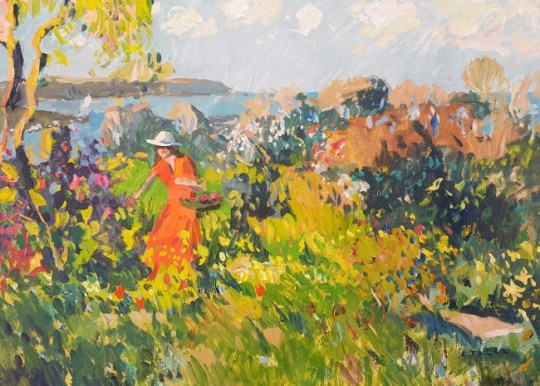
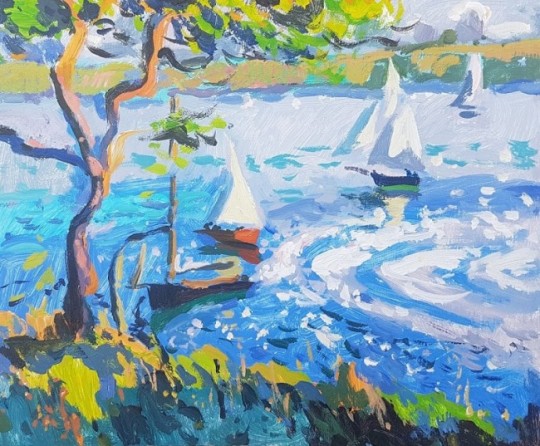
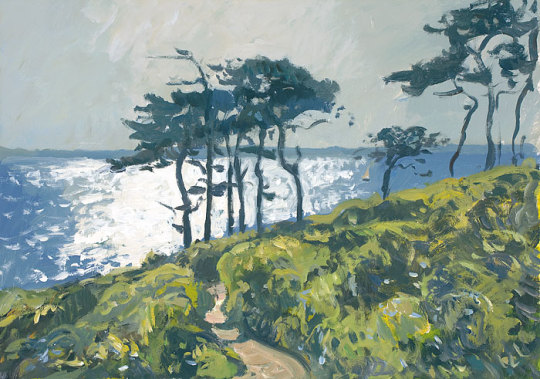
These artworks by Andrew Tozer
feel similar to: Gerald Durrell’s Corfu Trilogy
#book rec#nonfiction#biography#andrew tozer#gerald durrell#they feel like childhood memories!#so summery#full of light#and the sea#all that's missing is a painting of an insect with meticulous detail
91 notes
·
View notes
Note
Carlos Almaráz: Untitled, 1972 (the one with the dog)? :)

My first thought was Mark Haddon’s The Curious Incident of the Dog in the Night-time, and also Romain Gary’s novel White Dog—but only because of the titles! The actual atmosphere of the books doesn’t feel like this painting to me. I racked my brains further and, how about the graphic novel Laika, by Nick Abadzis, about the first dog sent to space? This one definitely has the right vibes (but do not read if sad dog tales really break your heart...)

26 notes
·
View notes